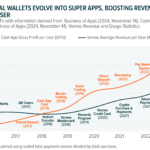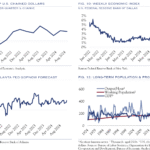1. The Rise of Private Equity in Institutional Portfolios
The pivot toward private equity among institutional investors is accelerating:
- A global survey by Aviva Investors finds that 56% of institutional investors now allocate 10% or more of their portfolios to private markets, and 51% plan to increase allocations over the next two years North America leads with 12.4% of portfolios in private markets, slightly above global averages.
- According to Deloitte and Preqin data, institutional investors—pension plans, endowments, insurers—are targeting PE allocations of ~11% or more to meet return objectives, with private equity IRRs historically exceeding 12% versus 6–7% for public equities and bonds
- Nuveen’s 2025 survey shows that over 90% of institutions hold both private equity and private credit, with 66% planning further increases in private allocations over five years—and private equity is where the largest growth is expected
So far in 2025, Q1 saw growing PE deal activity in the U.S., with $234 bn across 1,670 deals—up from Q4 2024—even as global deal volumes slipped
2. Key Drivers Behind the Shift
🔹 Leverage of Illiquidity Premium
- Institutions are drawn by the illiquidity premium—extra expected return to compensate for restricted liquidity. Aviva’s survey found this factor rising in importance: 47% expect it to drive allocations over the next two years, up from 40% today
🔹 Higher Return Expectations
- Private equity has consistently delivered ~12%+ net IRR for vintages 2008–2017, well above public markets. With bond and equity return expectations low, PE fills performance gaps institutions seek to close
🔹 Thematic & ESG Integration
- PE firms are increasingly integrating ESG into their strategies, investing in themes like renewable energy, healthcare, and tech innovation to align with institutional mandates and risk frameworks
🔹 Retail and Retirement Access Expanding
- A major trend of 2025 is the democratization of private equity: firms are launching interval funds, mutual fund or ETF wrappers, and 401(k)-linked private credit/equity vehicles. This opens access for retail and retirement investors who were historically excluded
- Empower, BlackRock, State Street, Apollo, and Blue Owl are launching private market options to 401(k) and defined-contribution plans, signaling institutional support and regulatory alignment
🔹 Operational Value Creation Through AI
- PE firms are more driven by operational value creation than financial engineering. AI and data analytics are being deployed across due diligence, deal sourcing, and portfolio management to cut costs, improve performance, and scale growth
3. Trends Structuring the PE Landscape in 2025
🔸 Continuation Funds & GP-Led Secondaries
- With lockups stretched and IPO markets soft, continuation vehicles—allowing LPs to cash out while the GP retains a champion asset—have surged. These accounted for 13% of exits globally in 2024, up from 5% in 2021
🔸 Growth in Mega Funds & Focus on Value Creation
- Large PE firms continue raising larger funds (~$66.8B across 80 U.S. funds in Q1 2025) and doubling down on operational improvements—cost reduction, process efficiency, revenue initiatives—over leverage expansion
🔸 Infrastructure & Digital Assets
- Investment continues to flow into infrastructure—especially digital infrastructure (data centers, connectivity) and energy transition assets. PE firms have backed more than $100B in data center investments alone over the past three years
🔸 Middle-Market and ESG-Focused Investing
- Middle-market firms (with revenues $10 M–$1 B) remain core to PE as they offer operational upside and valuation flexibility. ESG-linked businesses attract capital as risk mitigation and impact themes converge
🔸 Retailization & Tokenization Pathways
- Regulatory shifts are enabling interval funds, tokenized fund units (in development), and other retail-friendly structures that expand access beyond institutional investors
4. Risks & Headwinds for Private Equity
⚠️ Macro & Liquidity Constraints
- Rising interest rates, tariff volatility, and general macro uncertainty have slowed exits and fundraising. About $3.6 T in U.S. PE assets remain unsold—challenging LPs facing low distribution rates and liquidity demands
⚠️ Zombie Funds & Fundraising Dry Pits
- “Zombie funds” — PE firms that no longer raise new capital but still charge fees—have increased by ~50% in the U.S. since 2021, raising investor and governance concerns
⚠️ Fee Structure Pressure
- As traditional asset managers expand into private markets, they’re adopting carried interest–style compensation to compete—but this risks misalignment and internal imbalances within firms
⚠️ Recession & Exit Uncertainty
- Continued trade tensions and delayed exit cycles have prompted LP caution. Institutions like Yale have considered selling billions in PE holdings to reduce risk exposures
5. Strategic Implications for U.S. Investors
✅ Institutional Strategy (Pension, Endowment, Insurance)
- Many institutions are increasing allocations toward 7–15% exposure in private equity, while balancing with private credit and infrastructure. Emphasis is on managers with proven operational track records in resilient sectors
✅ Retail & Retirement Access
- Through interval funds, tokenized shares, and 401(k)-linked products, retail investors can access PE via familiar product forms, typically with 5–20% allocation caps in target-date setups
✅ Focus on High-Conviction Themes
- Investors are targeting ESG-aligned and technology-driven sectors—digital infrastructure, clean energy, healthcare services, cybersecurity—where PE firms can deliver both growth and resilience .
✅ Mitigating Illiquidity & Fee Risk
- Strategies include co-investment structures, single-asset continuation vehicles, and interval funds with defined liquidity windows. Institutional LPs and retail investors should assess liquidity profiles closely
✅ Leverage AI & Operational Intelligence
- Firms deploying AI across underwriting, portfolio management, and scaling operations are proving more efficient and attractive. Investors should prioritize managers with operational value-add frameworks rather than pure financial leverage models .
6. Outlook & Conclusion
As of 2025, U.S. investors—both institutional and increasingly retail—are embracing private equity not as a niche but as a core strategic asset class:
- Institutional momentum is unmistakable: expanding allocations and belief in long-term outperformance delivered through illiquidity premiums and active value creation.
- Retail inclusion is accelerating via innovative fund structures and expanded regulatory comfort zones.
- Thematic investment in high-growth and ESG-aligned sectors is reshaping the profile of PE deployment.
- Risks remain real: illiquidity, fee opacity, macro uncertainty, and governance issues (e.g. zombie funds, structural misalignment) require thoughtful diligence.
For investors, success in allocating to private equity in 2025 hinges on:
- Choosing proven managers with operational skills and topical sector expertise.
- Picking structures that balance yield with liquidity, especially if retail exposure is involved.
- Diversifying across sub-strategies: buyouts, credit, infrastructure, continuation vehicles, and co-investments.
- Keeping an eye on exit pathways—as traditional IPO and sale routes slow, continuation and GP-led solutions are increasingly central.
📌 Key Takeaways
- Institutional investors now allocate ~10–12% to private equity and plan to increase exposure further.
- Private equity net returns (~12% IRRs) remain materially higher than public markets, underpinning allocation logic.
- Retail and retirement investors are gaining PE access via interval funds, mutual/ETF structures, and 401(k) options.
- Themes like ESG, tech, infrastructure, and healthcare dominate PE deal activity and capital growth.
- Risks include illiquidity, fee structure complexity, diminished exit liquidity, and portfolio concentration.


